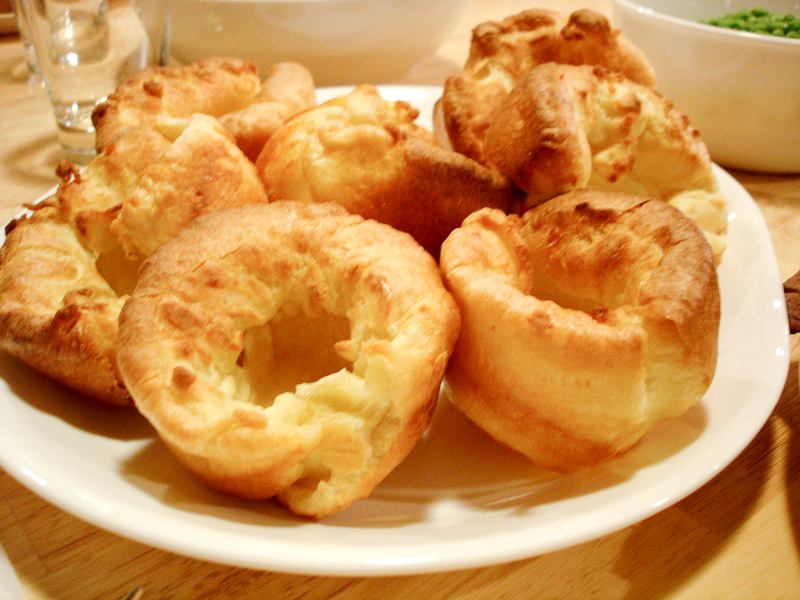
This week's theme seems to be evolving into the cuisine of the British Isles. We have a ton of potatoes (after finishing our own harvest of red potatoes, I stocked up with a big sack of Valley-grown, organic, absolutely delicious "German Butterballs"). There's lots of cabbage around, of course, and there have been repeated calls for
Bubble & Squeak, a British dish that combines potatoes and cabbage.
I had to promise the Prof that there would be no Haggis, but maybe Bangers and Mash..?
We started with corned beef on Sunday. From the left-overs, I made a family favorite: Gimme-More-Pie, my own invention, and named by a bunch of kids calling "Gimme more pie" at the dinner table several years ago...
Gimme More Pieany good piecrust, doubled, so there's a top too!
left-over meat, cut into small pieces (roast beef or corned beef)
left-over vegetables, cut up (carrots, potatoes, other firm vegetables)
left-over gravy
onions, spices (garlic & onion powder, thyme, etc), salt & pepper
If I don't have enough left-overs to put into the pie, I add more as I cook this!
Saute onions, add vegetables and meat, spices, and gravy (if necessary, I cheat and use a gravy mix). Taste, and add spices as needed or desired. Let filling cool.
Prebake piecrust, if desired.
Fill pie and cover with extra crust. Cut slits for steam to escape (if you want to get fancy, cut our shapes with cookie cutter). Bake at 375 Fahrenheit until crust is done (approx 35-45 min).
Other main dish pies that come to mind are
Shephard's Pie -- similar idea, but replace the topping with mashed potatoes (sometimes cheese is added).
Yorkshire Pudding
Bread-like accompaniment for British main meals. These are made from a batter similar to pancake batter (flour, eggs, milk) and cooked in hot grease or meat drippings. It really is very similar to what Americans call
Popovers.
My recipe is:
1 cup flour
1 c milk
3 eggs, beaten
optional: grated cheese, such as Parmesan
salt
melted butter for muffin tins
Bake 1/2 hour in hot oven (400 F), no peeking!
Irish Stew An Irish stew would have beef (or mutton) and lots of root crops: potatoes, carrots, celery, onions, turnips, etc.
Making stew is so easy, and so satisfying -- use good stock (see here for my post on
homemade), and don't forget the bay leaves!
Irish Soda Bread
Soda Bread recipe from Recipesource.com
3 cups Unbleached white flour
2 teaspoons Baking powder
2 cups Raisins
1 teaspoon Baking soda
1 Egg
1/2 teaspoon Salt
1/2 cup Honey
12 tablespoons (1 1/2 sticks) sweet butter, cold
1 cup Buttermilk
Makes 1 large loaf.
Preheat oven to 350F.
Sift the flour, baking powder, soda and salt into a large mixing bowl. Cut
the butter into small pieces and add. Cut it into the flour with a pastry
blender until the mixture is the size of peas. Add the raisins and toss to
distribute evenly, using two forks.
Beat the egg in another bowl until very frothy. Beat in the honey. When
it is well blended, beat in the buttermilk.
Gradually pour the liquids into the flour, tossing all the while with a
fork so the mixture gets evenly moistened. Continue tossing lightly with
two forks until the batter comes together; it doesn't have to be completely
mixed and should be very rough and lumpy.
Butter a heavy skillet or casserole, 10 to 11 inches in diameter and 2 to
3 inches deep. Round is the traditional shape. Spoon batter out into the
pan and push it gently to fill the pan. It can mound up somewhat in the
middle. Bake at 350 F about an hour or until the middle is set. Cut out a
piece to test if necessary.
Cut into wedges and serve warm from the pan.
The Garden Way Bread Book From the collection of Jim Vorheis
 Halloween is a good excuse to come up with some fun foods. As I'm planning for the Nature Center's Halloween party, I've been searching the web and came across some great recipes.
Halloween is a good excuse to come up with some fun foods. As I'm planning for the Nature Center's Halloween party, I've been searching the web and came across some great recipes. these apple-bites dentures where the teeth are almonds. I found them on biccin.com.
these apple-bites dentures where the teeth are almonds. I found them on biccin.com. are probably just oreos & icing -- I found these and much more on a site called recipecommander.
are probably just oreos & icing -- I found these and much more on a site called recipecommander.








